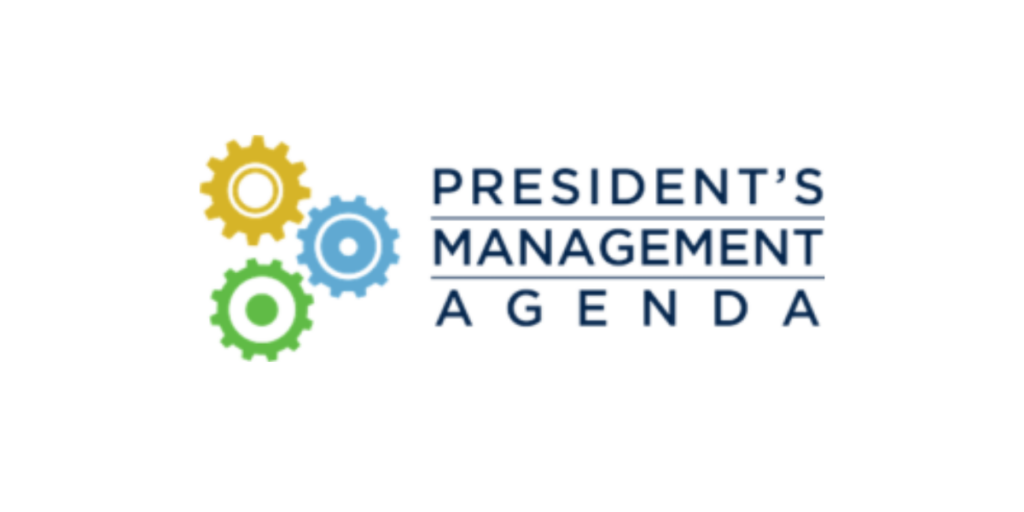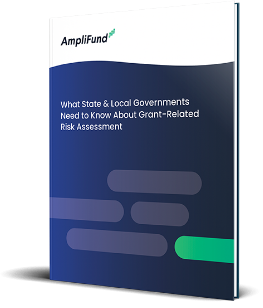The Federal vision for grants accountability under a new administration is typically outlined in the President’s Management Agenda (PMA). Accountability is at the heart of an administration’s PMA. It is the document that defines the operational goals of the Federal government and outlines the way that Federal agencies are expected to be stewards of tax dollars efficiently and transparently.
Due to the release of the 2022 budget following a presidential transition, we still don’t have a fully articulated PMA from the Biden administration. According to the 2022 Analytical Perspectives volume included with the budget, “The 2023 Budget will include a more comprehensive Analytical Perspectives volume with additional key updates on areas including the Government’s mission performance goals and objectives and the President’s Management Agenda (PMA), effective utilization of Federal real property, statistics that offer a numerical picture of the United States and an overview of statistical agency budgets and priorities, and the importance of using evidence, evaluation, and data to improve Government effectiveness.” (Analytical Perspectives, 3).
Some key phrases that stand out to me in the text surrounding the forecasted PMA are “statistics that offer a numerical picture of the United States,” and the importance of using “evidence, evaluation, and data” to improve Federal operations. The focus on “evidence” we see here is not new. The Foundations for Evidence-Based Policymaking Act of 2018 (known as the “Evidence Act”) also emphasizes the attention that has recently been paid to data standardization at the Federal level with the aim of linking spending to performance measurement to provide transparency in the use of Federal funds. It appears that reporting and compliance requirements will remain a focus of the Biden administration, much like they were under the Trump administration. But what will this mean for grant management?
When it comes to potential Biden administration reforms, former Head of the Management and Budget Office at the Department of Commerce Alan P. Balutis is anticipating a less dramatic approach to reform than many might expect, especially with the Biden administration’s emerging tendency to “go big.” He attributes this to the trend since the early 2000s for public sector approaches to Federal operations to be more nuanced than the dramatic sweeping-away of the past administration’s approach that characterized the 1990s-2000s. He sees this as a positive, and a trend that is allowing reforms to take place in the slow and steady manner they typically need to take root institutionally.
The Trump administration had a very explicit goal in its PMA to results-oriented accountability for grants. CAP Goal #8 of the Trump Administration’s PMA stated that “Federal agencies will maximize the value of grant funding by applying a risk-based, data-driven framework that balances compliance requirements with demonstrating successful results for the American taxpayer.” With this goal in mind, and the newly passed GREAT Act legislation, the PMA sought to rebalance compliance efforts, standardize reporting data, and measure outcomes to provide transparency to agencies around the success of their funded projects, and to the American people so they could see the impact their tax contributions were making to their communities.
The Biden administration is already taking steps that suggest their priorities will remain similar when it comes to their anticipated full PMA. Similar goals and takeaways often come from seemingly contradictory perspectives, and this sentiment is typically reflected in the PMA from one administration to the next in recent decades.
The “Build Back Better” plan outlined in the 2022 budget revolves around three key pieces of the President’s agenda to rebuild after the COVID-19 pandemic. These include the American Rescue Plan (which you are no doubt are becoming very familiar with), the American Jobs Plan, and the American Families Plan. Underlying each of these programs is a commitment to equitable distribution, decreasing barriers to accessibility, and an investment in technology modernization (Analytical Perspectives, 4).
This data-driven approach is showing up in areas outside of the budget conversation as well. As recently as this week, the Office of Management and Budget’s (OMB) Director, Shalanda Young, in the OMB’s report to the Office of the President responded to the administration’s call for agencies to identify administrative bottlenecks that are causing services to be inequitably distributed to some underserved demographics, and to collect more reliable data on how programs could better serve those populations.
The OMB study found that agencies do not always have the data needed to understand how they serve the public across demographics such as gender identity, race, ethnicity, sexual orientation, religion, disability, income or education, and that this prevents them from fully seeing the impact their policies and procedures have on disenfranchised communities.
While many agencies have an abundance of administrative data that has been gathered over the course of implementing federal programs and services, a multitude of agencies reported to OMB that “they do not yet have structures, processes, or mechanisms to deploy that data for purposes of assessing equity” (Meeting a Milestone). In her blog for The White House Briefing Room, Young further claimed that “administrative burden exacerbates inequity,” and that when “agencies work to mitigate administrative burden, their efforts can significantly enhance their ability to comprehensively advance equity, meet the needs of underserved communities, and improve operational efficiencies.
“We must face our work with sustained humility and ongoing learning from scientific data and analytic tools to ask more sophisticated questions about inclusion, belonging, and possibility. – Shalanda D. Young, Acting Director of the Office of Management and Budget
Even in the absence of the full Biden administration PMA, the administration’s focus on expanding opportunity through grant funding programs, the call for more data-driven reporting on performance to provide visibility into outcomes for the American people, and a commitment to bringing Federal technology into the 21st century highly suggests that we can continue to see a data-driven approach to grants accountability moving forward.
Performance reporting, data collection, and transparency surrounding outcomes will more than likely be key solutions to the potential goals outlined in the Biden administration’s future PMA. Considering the 2022 Analytical Perspectives volume, numerous executive orders, and the key legislation introduced by the Biden administration, it is reasonable to assume that technological innovation and modernization will be seen as vehicles that can reduce the associated administrative burden so equity can be addressed on an agency level.
For more information on how you can standardize your data reporting practices, prepare for ARPA compliance requirements, or reduce your administrative burden with technology to promote a more equitable allocation of your funding, we have resources for you.
Photo by to pngkey




